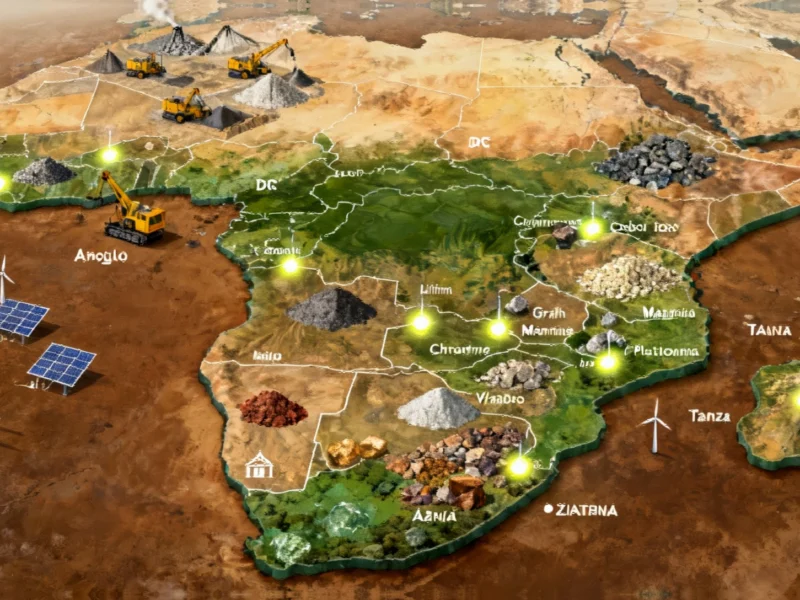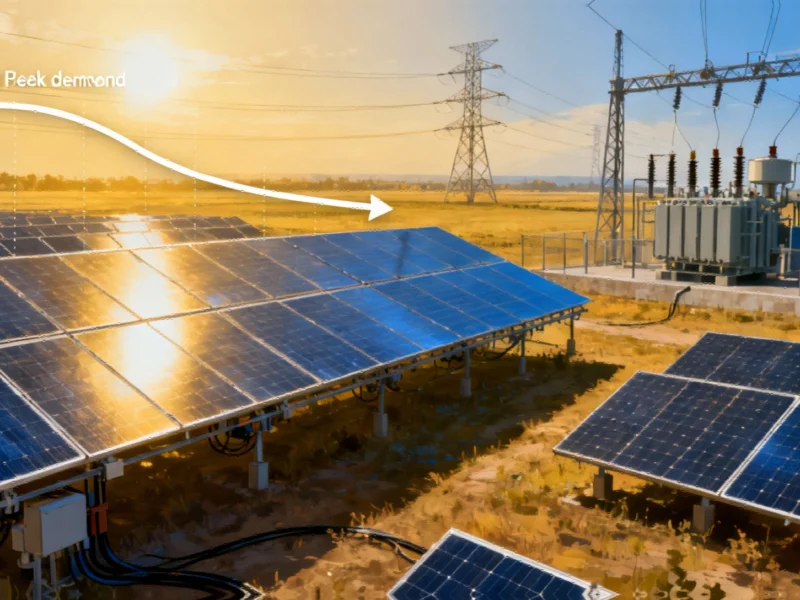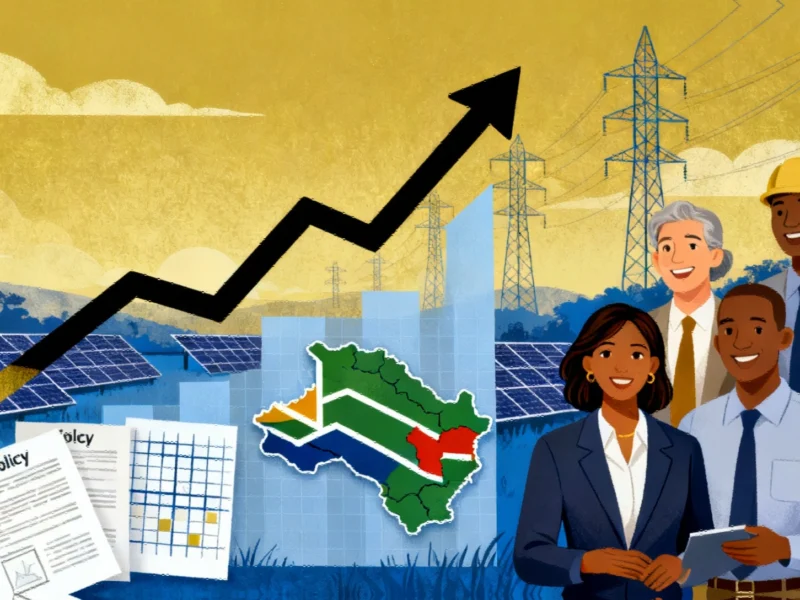Unlocking Southern Africa’s Mineral Wealth Through Strategic Investment
As global demand for clean energy technologies accelerates, Southern Africa stands at a pivotal crossroads with its vast reserves of critical minerals. The region holds approximately 30% of the world’s critical mineral resources, according to a comprehensive World Economic Forum report developed in collaboration with the Development Bank of Southern Africa. This positions Southern Africa as a crucial player in the global energy transition, yet significant financing challenges must be overcome to transform this potential into tangible economic development. The region’s mineral wealth represents not just an economic opportunity but a chance to reshape its industrial landscape, much like how strategic technology investments are transforming industrial sectors globally.
The Critical Mineral Landscape and Investment Gap
Southern Africa’s mineral portfolio includes copper, cobalt, lithium, graphite, manganese, chromium, vanadium and platinum-group metals spread across Angola, Botswana, the Democratic Republic of Congo, Madagascar, Mozambique, Namibia, South Africa, Tanzania, Zambia and Zimbabwe. Despite this abundance, the region faces a substantial investment shortfall. Africa’s exploration spending in 2024 reached only $1.3-billion, representing just 10.4% of global exploration expenditure, with Southern Africa’s share being even smaller. This investment gap occurs despite the region having higher reserves-to-production ratios for most minerals except lithium, indicating significant untapped extraction potential that could benefit from the type of strategic technological integration seen in other industrial sectors.
Identifying Key Financing Barriers
The WEF report identifies eight core financing barriers affecting Southern Africa’s critical mineral development:
- Policy uncertainty creating investor hesitation
- Perceived and actual investment risks
- Energy access constraints limiting operational capacity
- Transportation barriers affecting supply chain efficiency
- Lagging innovation in mining technologies
- Slow pace of industrialisation across the region
- Skill gaps in the workforce
- Demand volatility affecting long-term planning
These challenges require comprehensive solutions that address both immediate operational needs and long-term strategic development, similar to how industrial alliances are tackling complex technological integration challenges in other sectors.
Innovative Financing Solutions and Derisking Strategies
To overcome these barriers, the report advocates for innovative financing tools including derisking structures, guarantees and blended finance mechanisms. African Union Development Agency CEO Nardos Bekele-Thomas emphasized that “We must derisk ourselves to attract the right kind of capital.” This approach requires strategic thinking about how investments are structured and protected, much like the careful planning required for managing complex infrastructure projects facing regulatory and community challenges.
Mandela Mining Precinct executive director Julie Courtnage highlighted that derisking investment requires a multifaceted approach: “Return on investment is not only about your capital invested and the interest and the returns; it’s whether what you’re investing in is going to create more liabilities than returns. So, put that longer-term lens on and have a more systemic view of your investments.” This includes investing in “Africa-relevant” technologies rather than simply importing solutions that may not suit local conditions.
Successful Regional Initiatives and Case Studies
The report highlights several successful initiatives that demonstrate scalable solutions:
The Lobito Corridor: This railway-focused initiative connects mineral-rich regions of the DRC and Zambia to Angola’s Port of Lobito, supported by the EU, US, Angola and the DBSA. The project includes upgrades to existing rail lines and a planned 800 km extension to ease bottlenecks and foster regional trade. Such infrastructure development creates the foundation for broader industrial growth, similar to how strategic infrastructure investments are enabling digital transformation in other regions.
Zambia’s Mining Reforms: Zambia’s new mining legislation has boosted investor confidence and promoted greater local participation. With copper production expected to reach one-million tonnes by 2026 and a national target of three-million tonnes by 2031, these reforms demonstrate how policy certainty can drive investment and production increases.
Integrated Value Chain Development
Bekele-Thomas emphasized the importance of integrated value chain financing: “If you want to finance a mine, your proposal must include financing for the local processing plant, [and] the business case for a solar plant should be linked to powering a local industry, not just feeding the grid.” This holistic approach ensures that mineral extraction creates lasting wealth, local ownership and productive capabilities rather than simply exporting raw materials.
DBSA CEO Boitumelo Mosako warned that without this integrated approach, Africa risks repeating historical patterns where mineral wealth fails to translate into structural socioeconomic transformation. “Our mission has always extended beyond infrastructure financing – it is about enabling inclusive growth, alleviating poverty and deepening development impact across the continent,” she stated.
The Path Forward: Collaboration and Strategic Investment
Jörgen Sandström, head of the WEF’s Transforming Industrial Ecosystem programme, emphasized that “Cross-border collaboration is really essential in this space,” highlighting the need for public-private, private-private and public-public partnerships to scale clean energy and critical minerals development. This collaborative approach mirrors how diverse leadership is driving innovation in technology-intensive industries globally.
The successful development of Southern Africa’s critical minerals requires not just investment in extraction but in the entire ecosystem: transport corridors, power grids, supply chains, water systems, small and medium enterprises, and knowledge economies. By addressing financing barriers through innovative mechanisms, policy reforms, and strategic partnerships, Southern Africa can transform its mineral wealth into sustainable economic development that benefits both the region and global supply chains crucial for the energy transition.
Based on reporting by {‘uri’: ‘engineeringnews.co.za’, ‘dataType’: ‘news’, ‘title’: ‘Engineering News’, ‘description’: ‘Engineering News Online provides real time news reportage through originated written, video and audio material. Each week, an average of 240899-page impressions are generated by over 64 719 online readers. ‘, ‘location’: {‘type’: ‘place’, ‘geoNamesId’: ‘993800’, ‘label’: {‘eng’: ‘Johannesburg’}, ‘population’: 2026469, ‘lat’: -26.20227, ‘long’: 28.04363, ‘country’: {‘type’: ‘country’, ‘geoNamesId’: ‘953987’, ‘label’: {‘eng’: ‘South Africa’}, ‘population’: 49000000, ‘lat’: -29, ‘long’: 24, ‘area’: 1219912, ‘continent’: ‘Africa’}}, ‘locationValidated’: False, ‘ranking’: {‘importanceRank’: 383187, ‘alexaGlobalRank’: 103084, ‘alexaCountryRank’: 1386}}. This article aggregates information from publicly available sources. All trademarks and copyrights belong to their respective owners.



